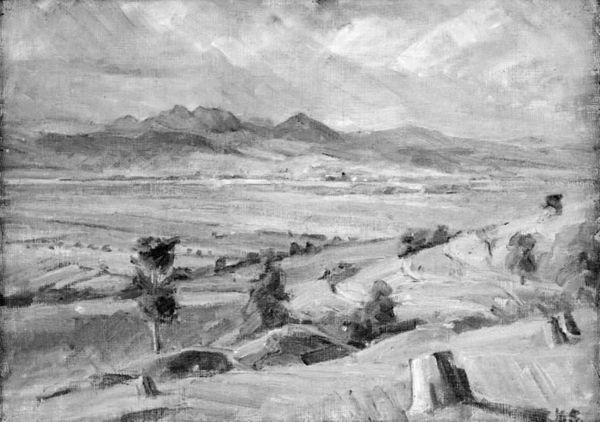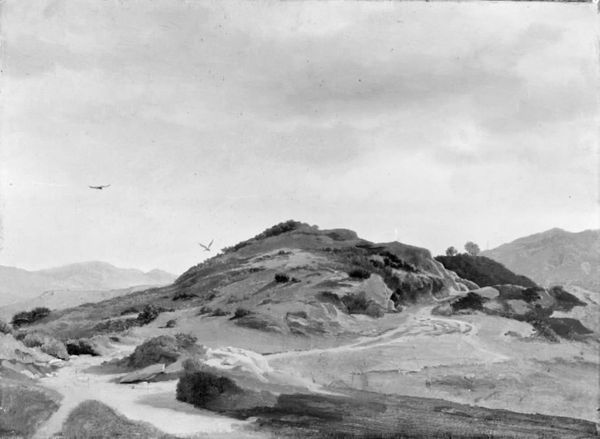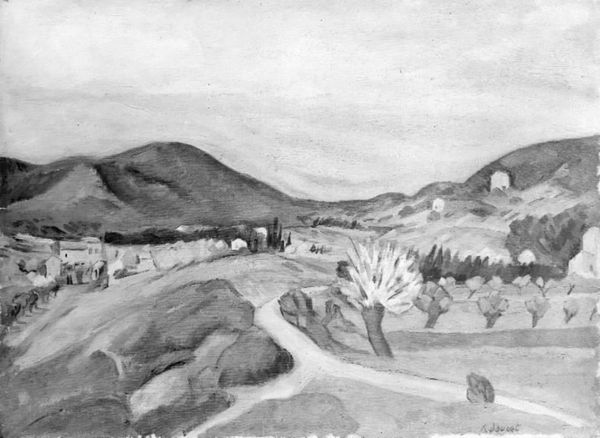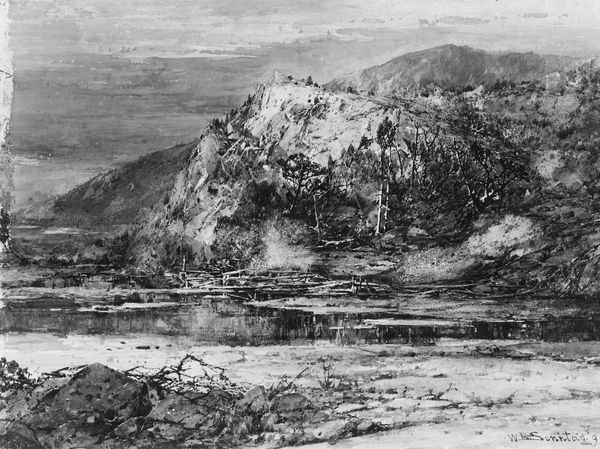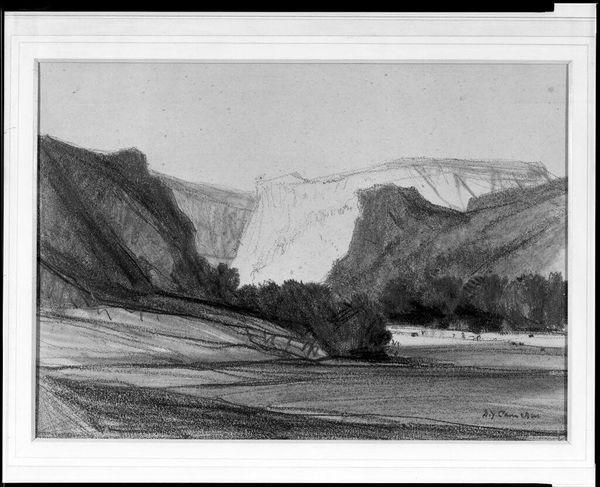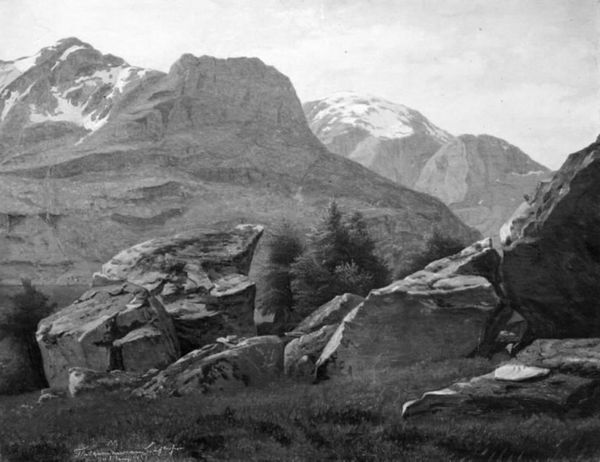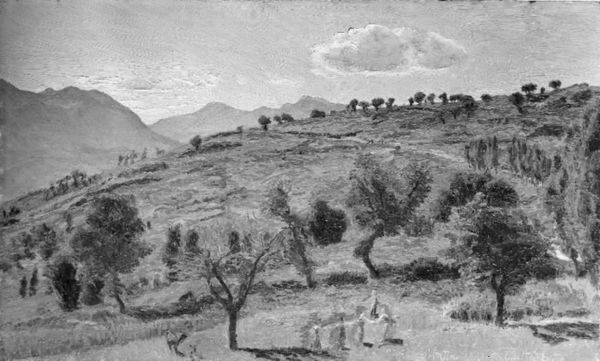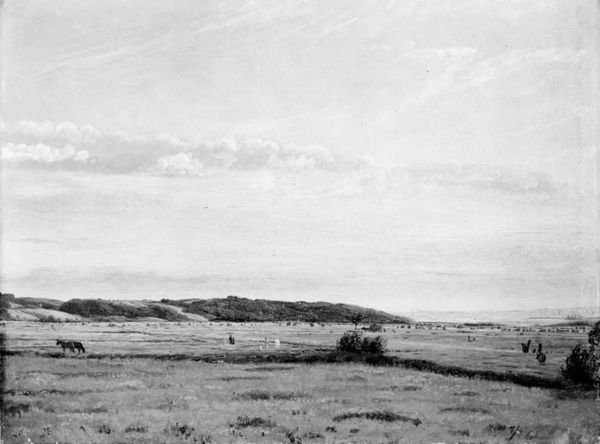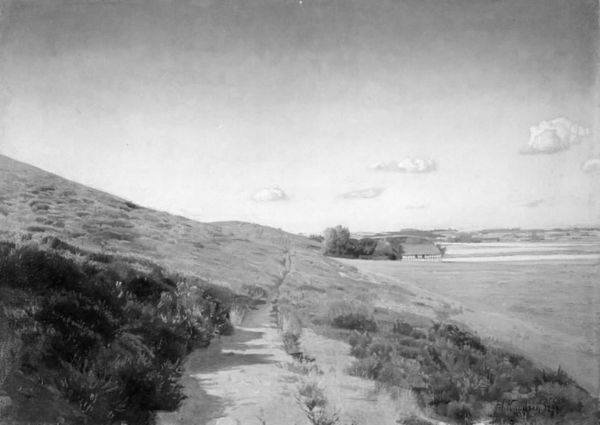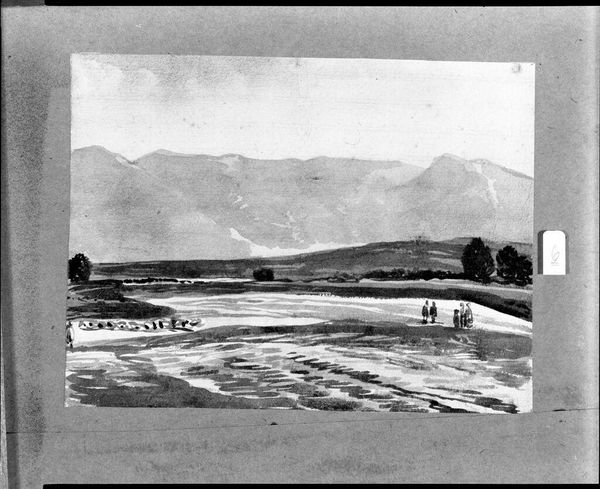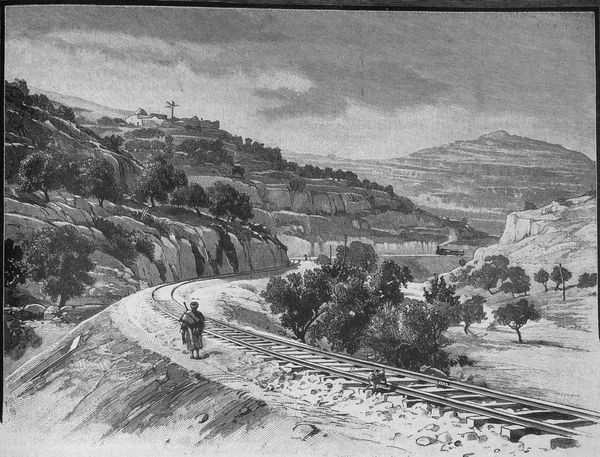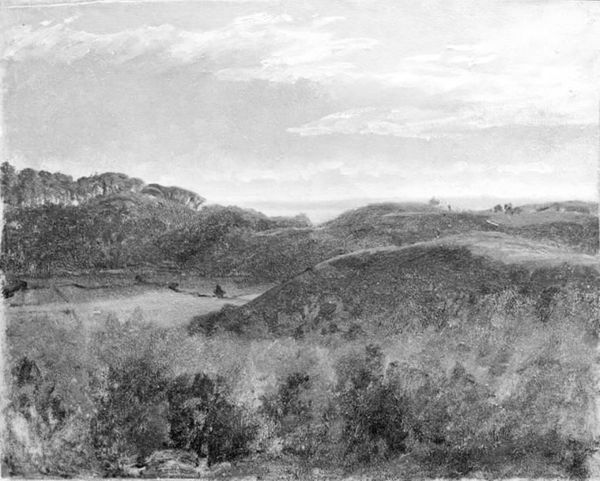
painting, plein-air
#
painting
#
plein-air
#
landscape
#
romanticism
#
monochrome
#
realism
#
monochrome
Dimensions: 22.5 cm (height) x 33 cm (width) (Netto)
Curator: This is Fritz Petzholdt’s “A Mountainous Landscape: Italy," likely painted en plein air sometime between 1830 and 1836, now residing here at the SMK. What strikes you most about this work? Editor: The overwhelming feeling of stillness. The subdued tonal palette, the hazy mountain range in the background. There's a sense of quiet contemplation. Curator: Indeed. One can't ignore the societal context that Petzholdt’s position offered him at that historical moment, providing him leisure to travel to Italy and document it according to his own views, and which contrasts greatly with the realities of most people inhabiting these areas in that time. His work must be considered a reflection of this inherent privilege. Editor: True, but observe the interplay of light and shadow—the texture in the brushstrokes on the path guiding our eye toward that lone figure carrying what seems like a basket on her head, the layering of values creating a remarkable sense of depth, it really conveys the harshness of life within the sublimity of this terrain. The monochrome palette contributes to a flattened picture plane which enhances the scene's pictorial quality. Curator: And how might that very “harshness”, seen through a monochromatic lens, sanitize or perhaps, romanticize a potentially brutal existence of this Italian countryside in the collective imaginary of the Romantic movement? What power structures are being reinforced, intentionally or not? The lone woman you point out seems more a symbol of bucolic romanticism than a real subject. Editor: The very act of simplifying a visual world into such elements underscores its powerful semiotic qualities; the artist deliberately reduces and composes reality through tone and texture into aesthetic language. Curator: Art, like everything else, isn't created in a vacuum. Social strata and prevailing ideas about identity undeniably influence how these scenes are seen and shown to audiences then, and seen and shown again now. Editor: Ultimately though, what lasts, and what captivates, comes from something more. The careful modulation of the muted hues to simulate this sweeping terrain moves it from mere documentation to the evocative. Curator: Well said, an observation as evocative, if I may say so, as the vista before us. Editor: Thank you, I think seeing it through this dialogue brings this study into a much richer light.
Comments
No comments
Be the first to comment and join the conversation on the ultimate creative platform.
